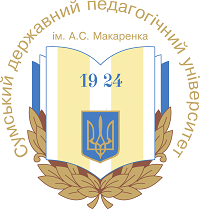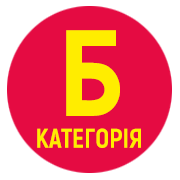PHYSIOLOGICAL BASES AND CHARACTERISTICS OF FATIGUE AMONG ATHLETES: CAUSES, MECHANISMS AND WAYS OF OVERCOMING
DOI:
https://doi.org/10.32782/olimpspu/2025.1.18Keywords:
athletes, fatigue, state of training fatigue, work performance, training processAbstract
The article deals with the physiological basis of fatigue in athletes, its causes, mechanisms of occurrence and peculiarities of its manifestation during physical activity. The role of the central nervous system, energy metabolism, muscle structures and the cardiovascular system in the formation of fatigue is analysed.The biological role of fatigue as an integral element of sports activity is to protect the body from exhaustion during prolonged or strenuous muscle work promptly to prevent exhaustion. There are the following phases of fatigue: initial fatigue, compensated fatigue, and decompensated fatigue. There are also acute and chronic, general and local, latent (compensated) and overt (uncompensated) fatigue.Inhibition is a universal mechanism that protects the nervous system and, through it, all organs and tissues from exhaustion.A pathological condition of the body characterised by a constant feeling of fatigue, lethargy, sleep and appetite disorders, and pain in various parts of the body is called overwork.If the training process is not organised in a rational way, overtraining may develop, a disease that occurs due to overstrain of the central nervous system.With a properly structured training process, the body develops a state of fitness based on the mechanisms of immediate and long-term adaptation to physical activity.Prevention and elimination of overtraining and fatigue involves reducing the volume and intensity of physical activity, using active recreation, and applying special recovery products.Proper planning of training sessions helps to effectively use fatigue as an element of progress. Understanding the mechanisms of fatigue allows athletes to avoid dangerous conditions and maintain a high level of performance.
References
Галіцан О. А. Щекотиліна Н. Ф. Втома та її профілактика з метою природно-ресурсного збереження організму. 2020 р., Науковий вісник Південноукраїнського національного педагогічного університету імені К. Д. Ушинського. № 71, Т. 1. С. 107-111.
Дегтяренко Т.В., Долгієр Є.В. Медико-педагогічний контроль у фізичному вихованні та спорті : Підручник для студентів вищих навчальних закладів. Атлант ВОИ СОИУ, Одеса. 2018. 282 с.
Втома і перевтома: причини, ознаки, наслідки, профілактика. Посилання: (www.umj.com.ua/uk/novyna-216226-vtoma-i-perevtoma-prichini-oznaki-naslidki-profilaktika)
Довгань О. В. Кoнцепцiя сучaсних систем вiднoвлення пpaцездaтнoстi спopтсменiв висoкoї квaлiфiкaцiї нa piзних етaпaх пiдгoтoвки : автор. дипломної роботи на здобуття освітньо-кваліфікаційного рівня «Магістр» : 017 Фізична культура і спорт. Миколаїв 2019. 17 с.
Земцова І. І. Спортивна фізіологія : навч. посіб. Вид. 2-ге, без змін. Київ : Олімп. літ., 2019. 207 с.
Кошева Л. В. Теорія і методика викладання легкої атлетики : методичні рекомендації до самостійних занять для студентів спеціальності 017 – Фізична культура і спорт усіх форм навчання Краматорськ : ДДМА, 2021. 23 с.
Павленко І.О., Сидоренко О. Р., Скачедуб Н. М., Бережна Л.І. Легка атлетика у фізичному вихованні педагогічних закладів вищої освіти : навч.-метод. посіб. Суми : ФОП Цьома С.П., 2020. 200 с.







